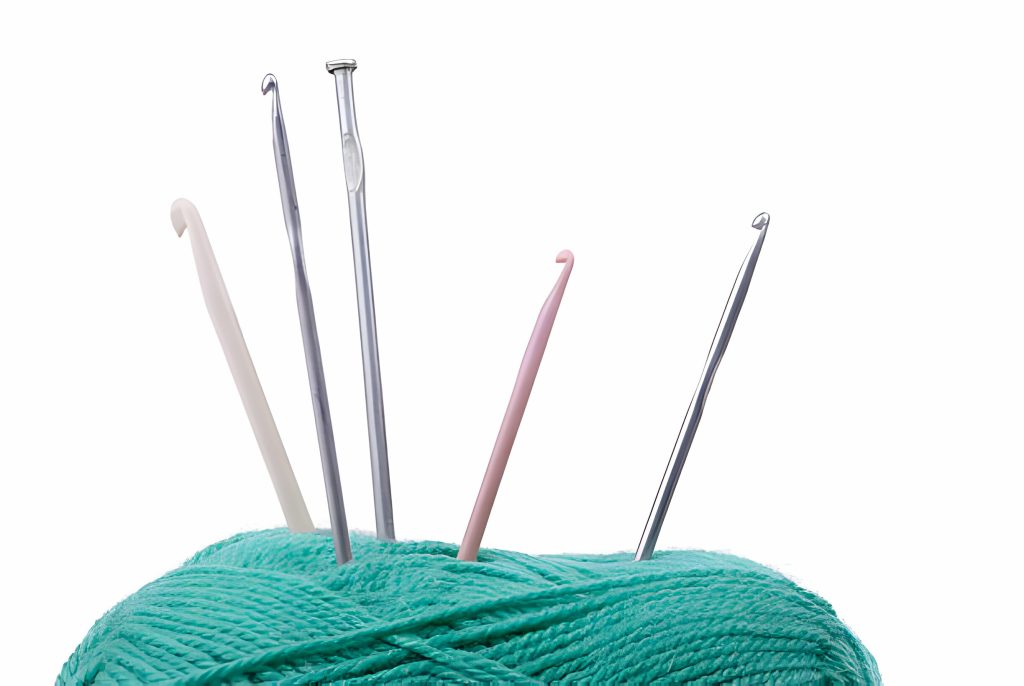Do you know that there are three main types of knitting needles used for creating beautiful projects like scarves and hats? Straight, double-pointed, and circular needles each have specific purposes in knitting. They come in different materials such as metal, wood, and plastic, impacting your yarn grip and stitch control. Mastering needle sizing is crucial for achieving the right gauge. Start with basic needles and expand your collection gradually to enhance your knitting experience.
Needle Varieties and Uses
Circular needles, with their flexible cord, are ideal for both round and flat knitting projects due to their versatility. Needle craftsmanship plays a crucial role in the quality and performance of your tools. The circular advantages extend beyond their ability to handle various project types seamlessly. DPN delights offer a unique experience for working on small circumference items such as socks or mittens. Interchangeable wonders give you the freedom to mix and match needle sizes and cord lengths according to your preferences. Straight simplicity may appeal to those focused on traditional flat knitting projects like scarves or washcloths. Explore these different needle varieties to enhance your crafting experience further.
Understanding Needle Materials
When selecting your needle materials, consider how they can impact your grip and control over stitches. Different materials can greatly influence your knitting experience. Here are some factors to keep in mind:
- Needle construction: Varies from straight needles to circular or double-pointed needles.
- Material impact: Metal, wood, plastic affect yarn grip and stitch control differently.
- Grip considerations: Think about how the material texture feels in your hands.
- Stitch control: Certain materials may help with maintaining consistent tension.
- Personal preferences: Experiment with various materials to find what works best for you.
Exploring Needle Features
While exploring different types of needles, keep in mind the features and functions that can enhance your knitting experience. Needle construction plays a crucial role in stitch control and yarn compatibility. Different materials like metal, wood, and plastic offer varying grips and textures for your projects. Understanding how needle maintenance affects performance is key to longevity. Customization options such as interchangeable needles allow for personalized adjustments to suit your preferences. By selecting the right needle construction based on your project needs, you can improve stitch precision and overall knitting satisfaction. Take care of your needles properly to ensure they remain in top condition for future use. Experiment with customization options to find what works best for you.
Navigating Needle Sizing
As you explore different types of knitting needles, remember that understanding needle sizing and adjustments is crucial for achieving the right gauge in your projects. Here are some key points to keep in mind:
- Gauge Adjustments: Needle size changes can impact the tension and overall size of your knitted piece.
- Yarn Compatibility: Different yarn weights require corresponding needle sizes for optimal results.
- Needle Length: Consider the length of your needles based on the project type; longer needles may be better for larger projects.
- Interchangeable Options: Investing in interchangeable needles allows for flexibility and customization.
- Personal Preferences: Experimenting with various materials and needle types will help you discover what works best for you.
Beginner Tips and Maintenance
Beginners should start with basic needle sets and gradually explore other options for a more diverse knitting experience. When it comes to needle organization, sorting needles by size can make them easier to find. Consider various storage solutions for functionality and aesthetics. For needle maintenance tips, keep your needles clean and store them properly to prevent damage. Selecting the right needles as a beginner is crucial; experiment with different types and materials to see what you prefer. Remember that needle size adjustments can affect your gauge and project outcome, so use needle gauges to ensure accuracy in your work.
Knitting Needle Recommendations
Explore different types of needles to suit your knitting preferences and projects, ranging from straight pairs with pointed ends to versatile circular options. When diving into the world of knitting needles, consider the following:
- Needle preferences: Discover what feels comfortable in your hands and works best for your knitting style.
- Choosing sizes: Select the right needle size based on yarn weight and project requirements.
- Trying different materials: Experiment with metal, wood, plastic, or bamboo to find what enhances your stitching experience.
- Storage solutions: Organize your needles by size for easy access and consider storage options that keep them safe and tidy.
- Needle maintenance: Learn how to properly store and care for your needles to ensure they last through many more projects.

